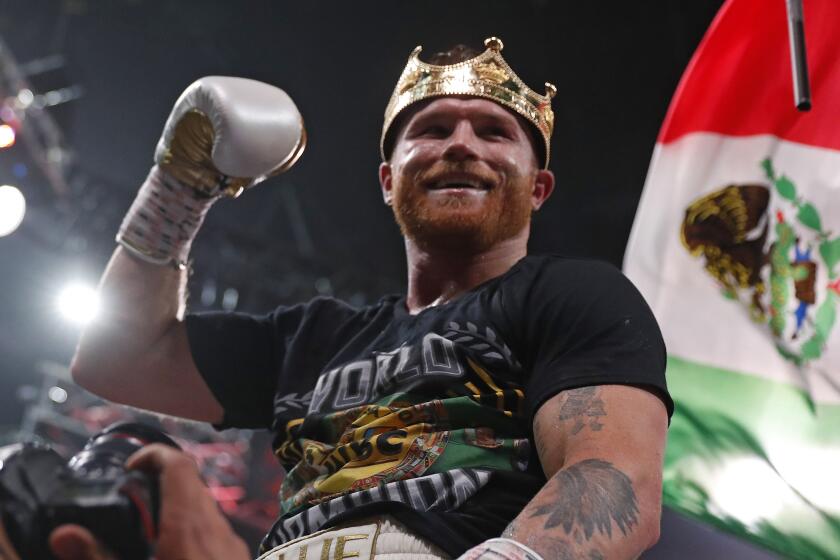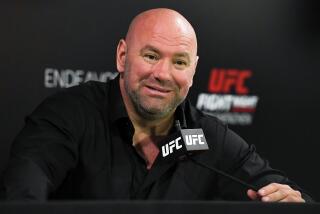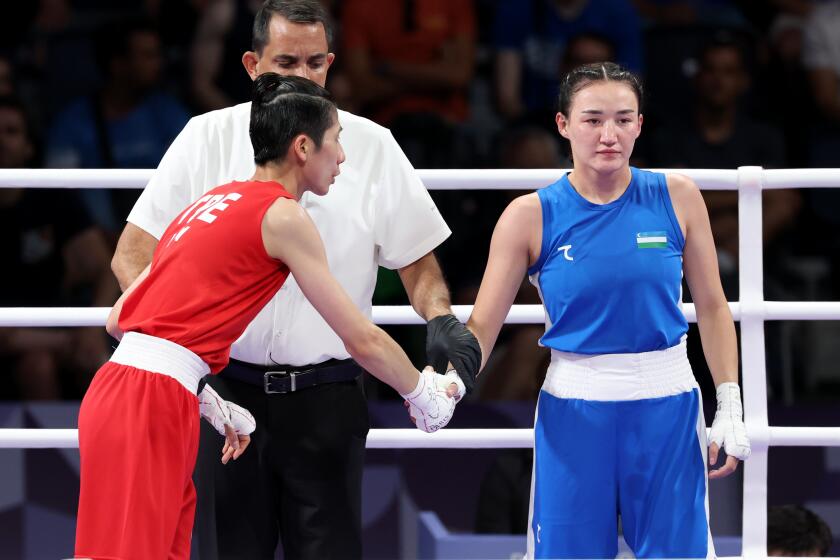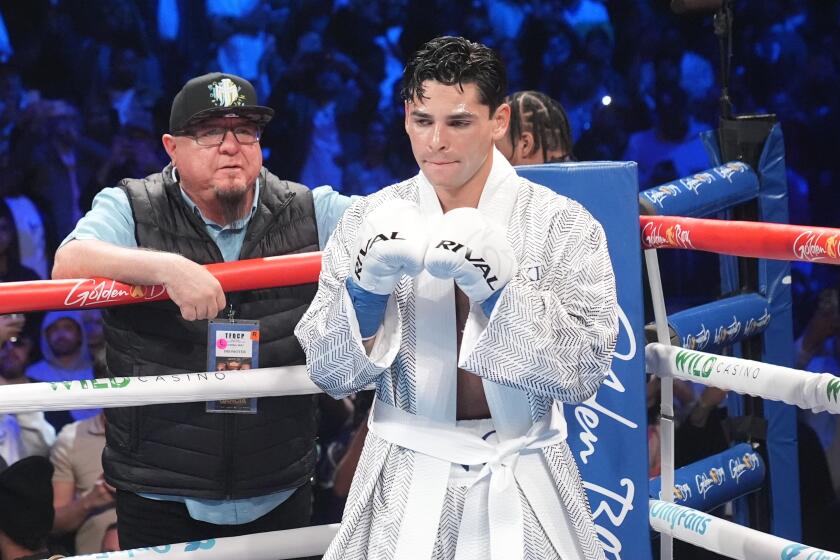Column: A weighty decision looms for Canelo Álvarez after latest triumph
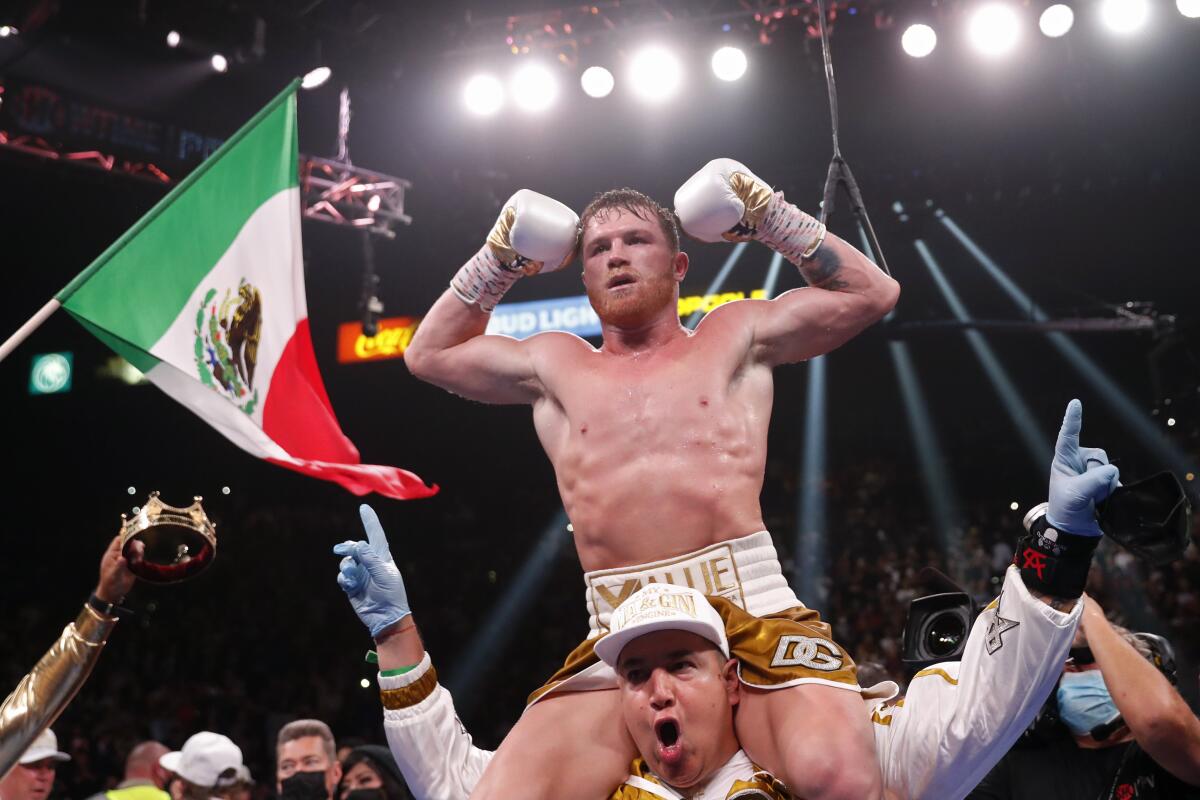
LAS VEGAS — What Canelo Álvarez did Saturday night was the equivalent of cutting down a redwood tree with a steak knife.
His technical knockout of an opponent of Caleb Plant’s size was evidence of his extraordinary finishing ability. At the same time, the fact he required more than 10 rounds to stop a fighter with Plant’s limitations was an indication he was moving uncomfortably close to his physical ceiling.
Because size matters.
That reality is something of which Álvarez should be mindful as he makes the difficult choice of what to do next in his career. There is no clear path.
He can remain in a 168-pound division in which there are no more belts to be won and a shortage of potential name opponents to conquer. Or he can continue to move up in weight, which would expose him to the same dangers that ultimately derailed some of his former contemporaries in boxing’s pound-for-pound rankings, including Román González, Mikey Garcia and Vasiliy Lomachenko.
Canelo Álvarez defeats Caleb Plant by knockout in the 11th round to become boxing’s undisputed super middleweight champion in Las Vegas on Saturday.
Size was the only reason Plant lasted as long as he did against Álvarez at the MGM Grand Garden Arena. Álvarez overwhelmed him in every other aspect.
Álvarez walked through Plant’s pitty-pat punches. He advanced with purpose, trapping the defensively inclined Plant against the ropes and in the corners. He whacked Plant’s body with left hooks. He attacked Plant’s head with chopping rights.
At 5 feet 8, the 31-year-old Álvarez is particularly short for a super middleweight, however. Álvarez won his first world championship at 154 pounds.
He gave up five inches to Plant, and when the two fighters were in the ring together, they looked as if they should be separated by a couple of weight categories.
“Things were more complicated than I thought they would be,” Álvarez said in Spanish.
Size does that. Álvarez spent the opening rounds figuring out how to close the distance against his taller opponent. Unlike the emaciated-looking Callum Smith, whom Álvarez defeated last year, Plant had a solid physical frame that allowed him to withstand a certain amount of punishment. Had Álvarez and Plant been the same size, the fight would have lasted four or five rounds. Instead, it went more than a minute into the 11th.
In the decisive round, Álvarez landed a left hook upstairs. As Plant ducked into a protective posture, Álvarez threw a right uppercut. Plant was down on all fours.
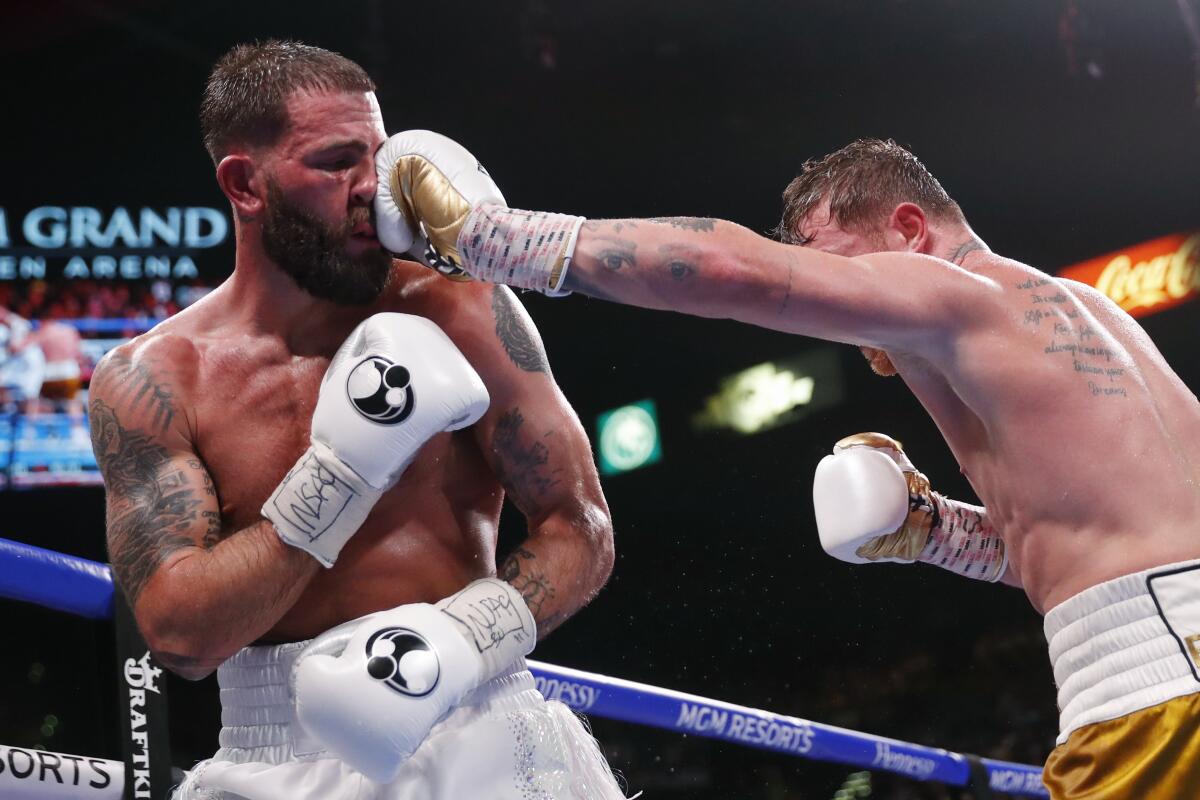
Plant rose to his feet, but Álvarez jumped on him and unleashed a barrage of power punches, including a short right to the side of Plant’s head that ended the fight.
In the wake of his victory, Álvarez said he would likely fight next in May, but was uncertain against whom or at what weight class.
There isn’t an obvious choice.
Remaining at 168 pounds has risks. Take Saturday’s bout: The selling point of the fight against Plant wasn’t that he was fighting Plant, but that he was about to become the first fighter in the division to ever win the world titles for all four major sanctioning bodies.
Which basically said everything that had to be said about how competitive the fight would be.
In boxing, the belt doesn’t make the fighter. Rather, the fighter makes the belt.
When Álvarez fought, say, Gennady Golovkin or Floyd Mayweather Jr., minimal attention was paid to which belts were at stake. Those fights weren’t important because of the belts. Those belts were important because of who was fighting for them.
Álvarez fought four times at 168 pounds in the last year. Included was a tuneup against a no-chancer named Avni Yildirim. The other three fights, including the fight against Plant, were notable mainly because they moved him closer to his stated ambition of claiming each of the four major 168-pound championships. Those weren’t easy sells, as the Plant fight was expected to fall considerably short of the million pay-per-view buys that once was the standard for major promotions.
How many more times can Álvarez sell a fight in which the main story line pertains to hardware of questionable value?
About the only worthwhile opponent for him at super middleweight would be Golovkin, against whom Álvarez has a draw and disputed decision victory. But Golovkin turns 40 in April, which could diminish public appetite for a third fight between them.
But the threat of indifference could be preferable to the kinds of dangers Álvarez would encounter at 175 pounds.
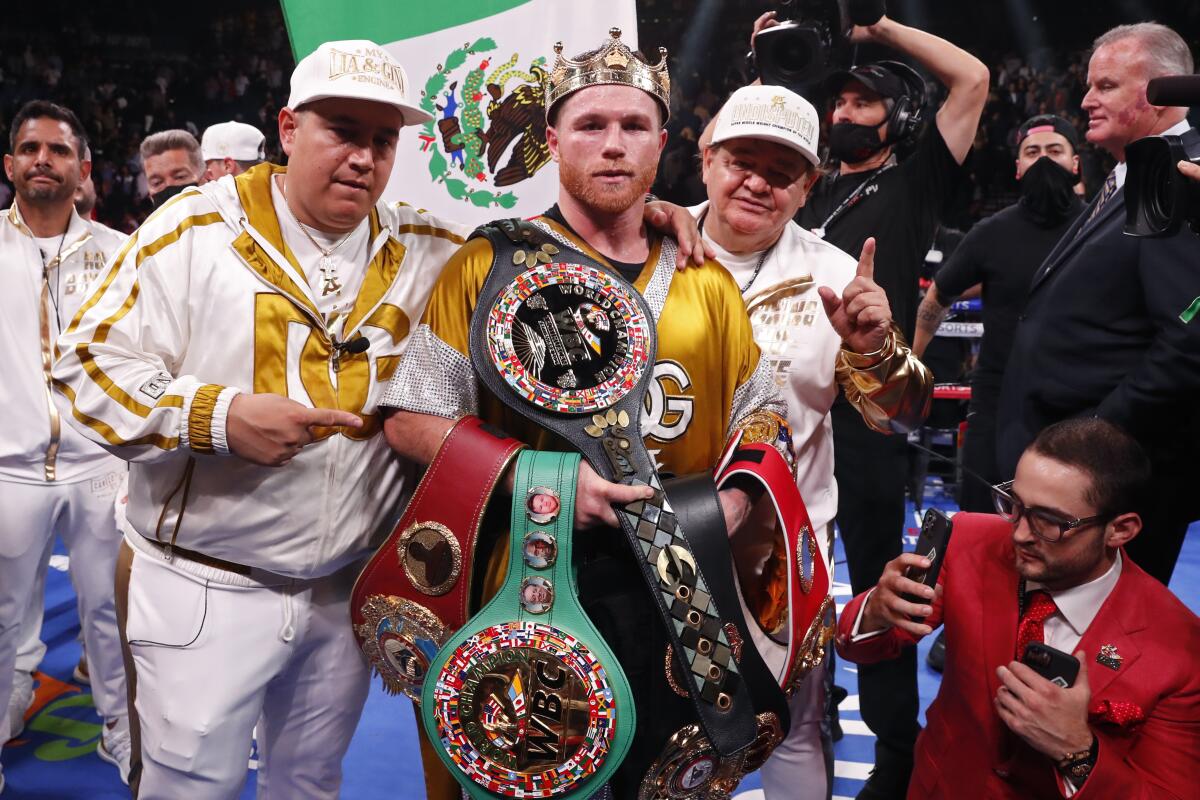
Two years ago, he fought at that weight and scored an electrifying knockout against Sergey Kovalev, a once-formidable fighter who was previously destroyed both mentally and physically by Andre Ward. The win over Kovalev could have convinced Álvarez that he can thrive as a light heavyweight. He might be right. But when fighters move up one division too many or take on a heavier opponent one too many times, they’re reminded of why they’re divided by weight.
The diminutive Gonzalez was arguably the best fighter of the last decade, the Nicaraguan winning world championships at 105, 108, 112 and 115 pounds. The last jump was one too many. He threw everything at Carlos Cuadras in their 2016 fight but couldn’t knock him out. Gonzalez lost a decision to Srisaket Sor Rungvisai in his next fight. Rungvisai knocked him out in the rematch.
Garcia and Lomachenko were also dominant champions, who scaled up in weight in search of greater challenges, only to be defeated by opponents who were less skilled but heavier, Garcia by welterweight Errol Spence and Lomachenko by lightweight Teofimo Lopez.
The most attractive opponent at 175 pounds for Álvarez would be Mexican American David Benavidez. The 24-year-old Benavidez isn’t as refined a fighter as Álvarez but is a physical freak. If Álvarez had trouble breaking down Plant, he’s not stopping Benavidez.
Benavidez lost his version of the 168-pound title because he missed weight. He could theoretically fight Canelo in that division, but would still enjoy significant physical advantages.
Maybe Álvarez fights Benavidez and wins. But the consequences of taking on a heavier fighter aren’t always immediate. Manny Pacquiao was fighting as a welterweight when he decided to move up another division to take on Antonio Margarito. Pacquiao won, but not without paying a price. In retrospect, it’s likely the punishment he received from Margarito contributed to his subsequent decline.
With his history of inviting danger, Álvarez figures to fight Benavidez at some point. But if he doesn’t — similar to how Mayweather, a blown-up lightweight, never fought Margarito — he shouldn’t be faulted for that. Weight classes exist for a reason.
More to Read
Go beyond the scoreboard
Get the latest on L.A.'s teams in the daily Sports Report newsletter.
You may occasionally receive promotional content from the Los Angeles Times.

